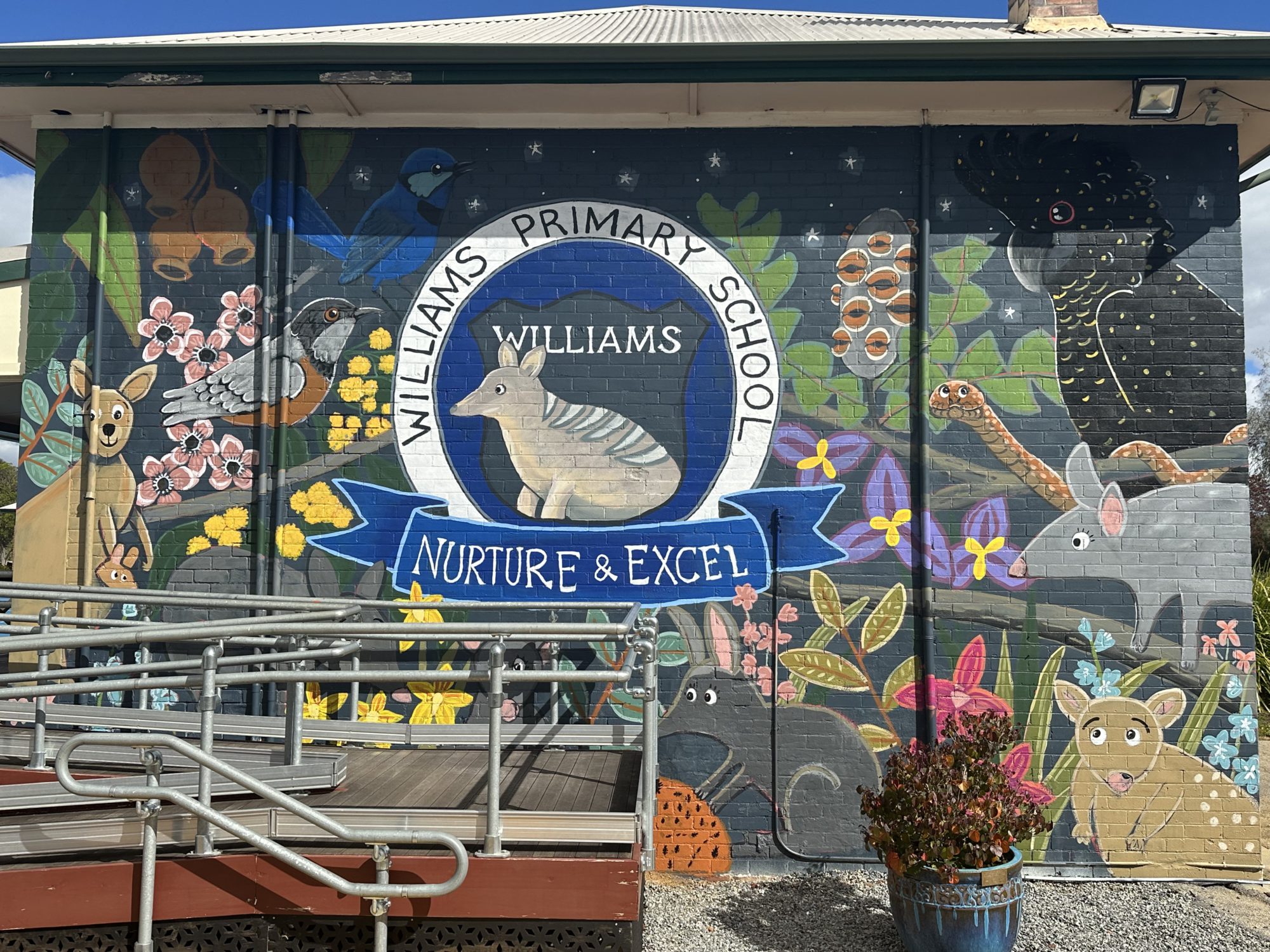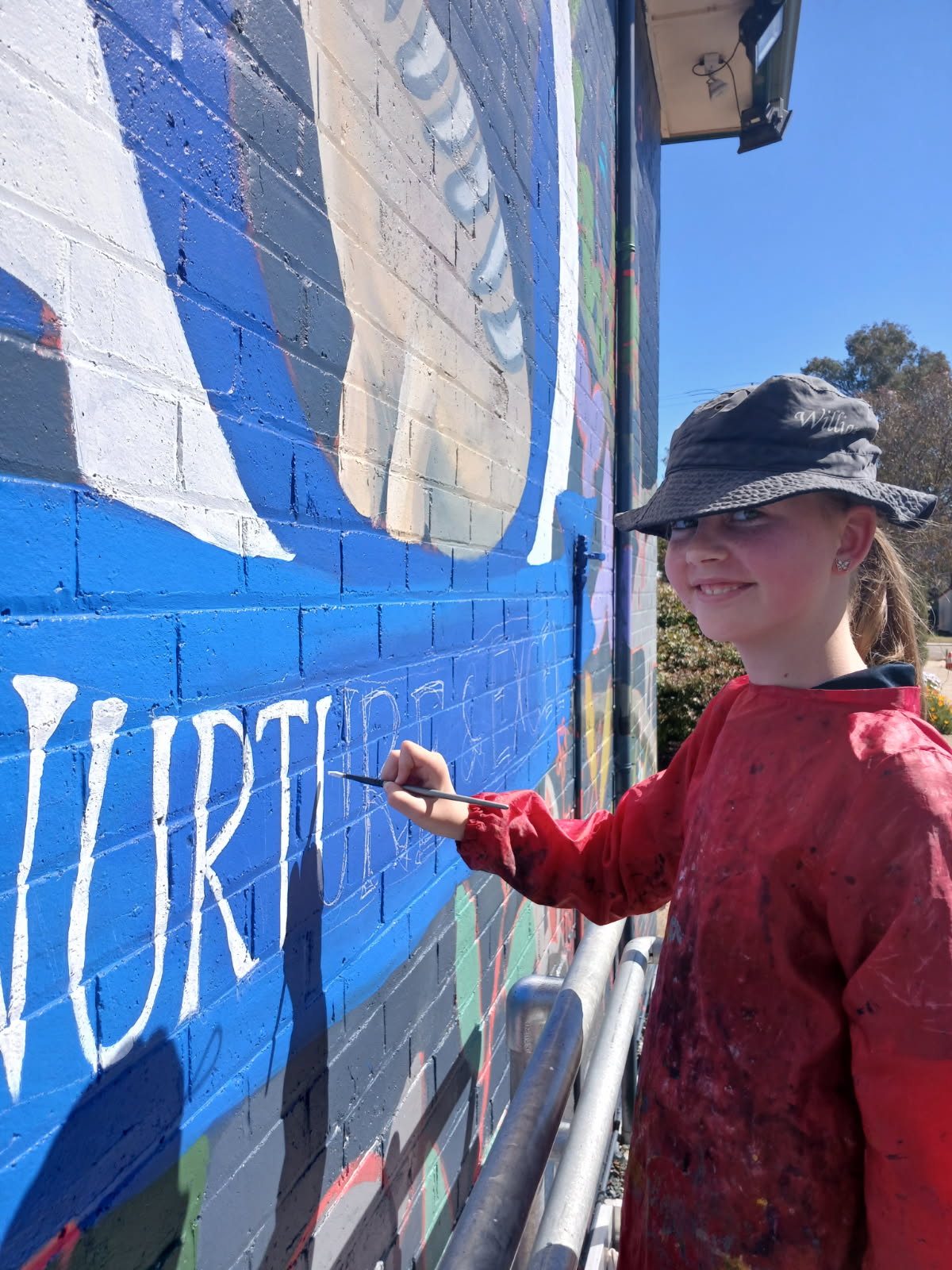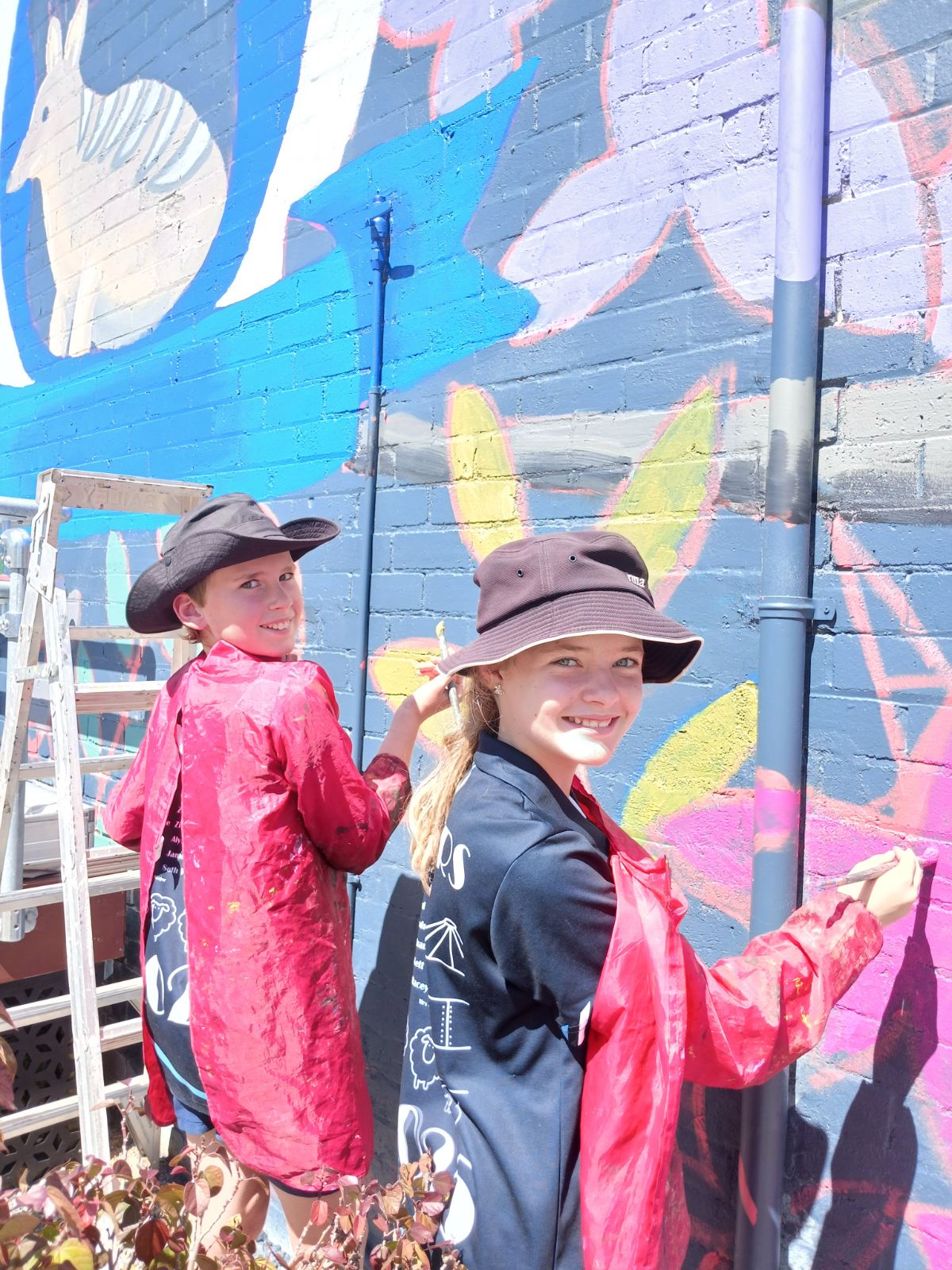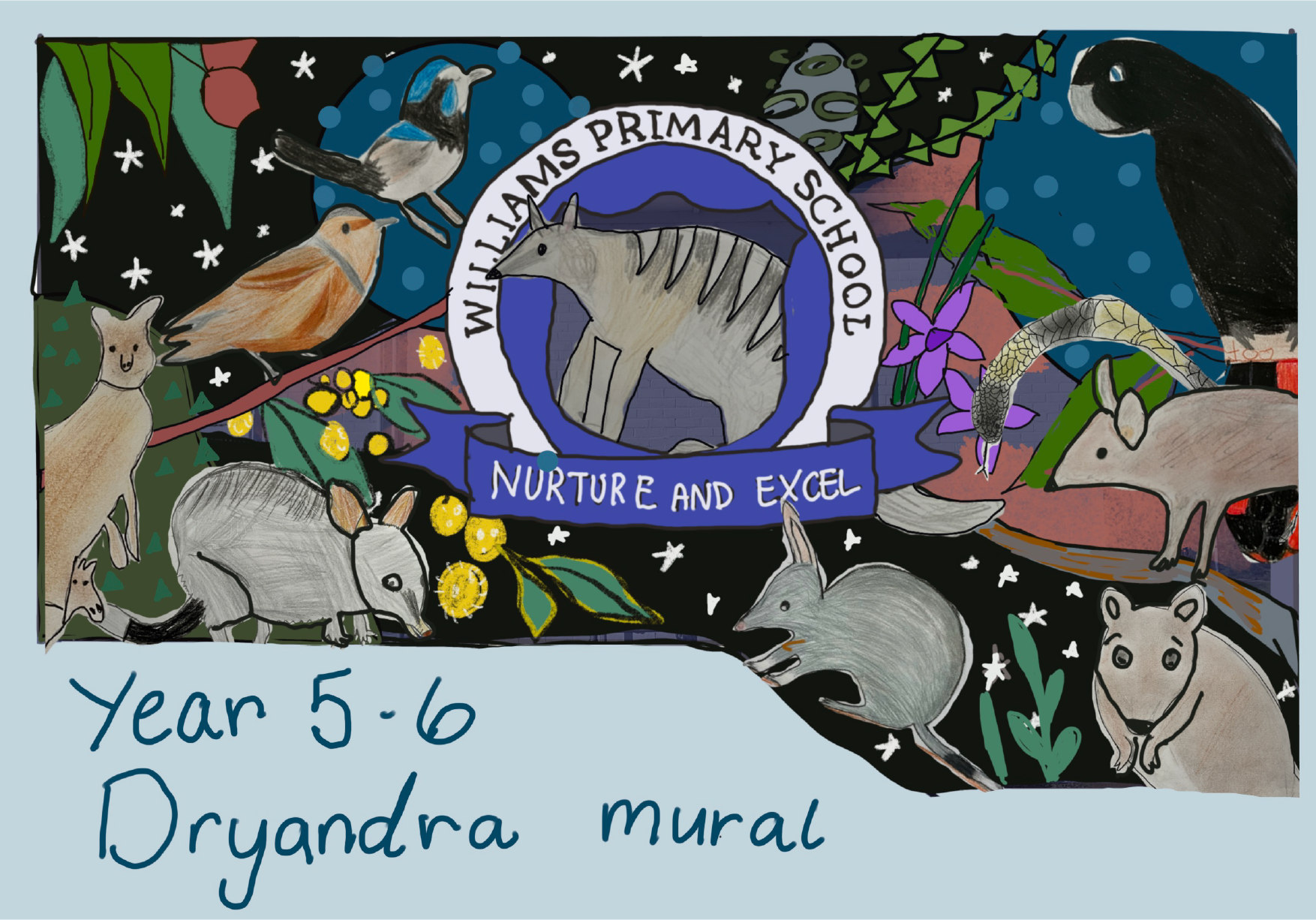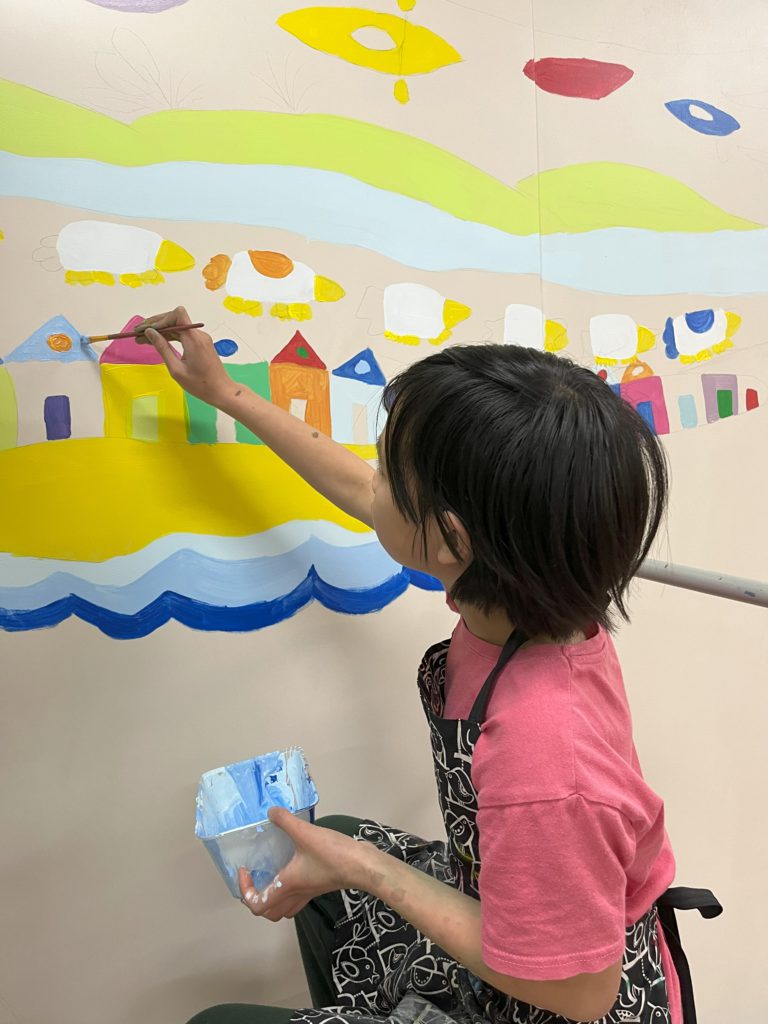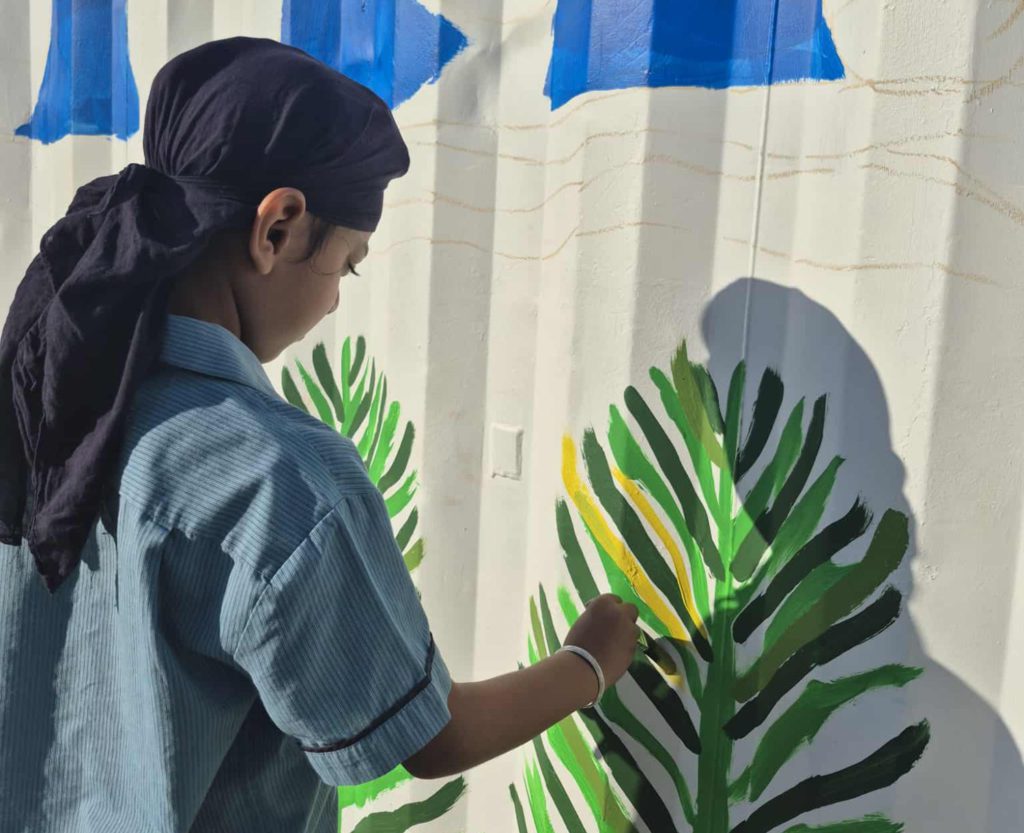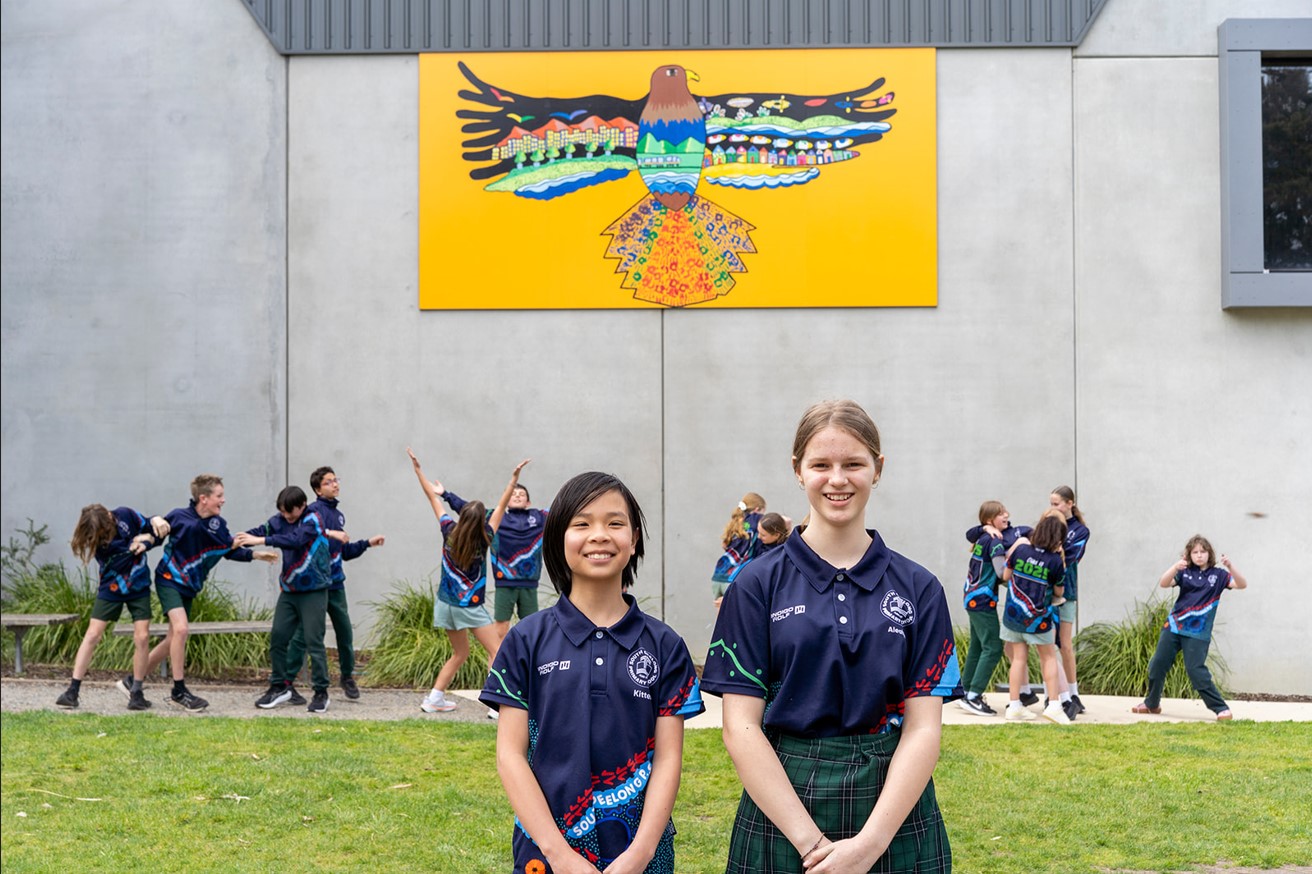
Williams Primary School (Grades 5-6)
A Proud History
Williams Primary School, located in the rural town of Williams about 160 km’s from Perth in Western Australia, was first established in 1879. Originally a high school, it transitioned to a primary school in 1989. Over the years, the school has adapted its facilities while maintaining a strong focus on providing a caring, supportive environment. Guided by the ethos Nurture and Excel, students are encouraged to develop respect, responsibility, initiative, self-control, and emotional intelligence. “Families and the wider community are central to the life of our school,” the staff note, fostering a warm and collaborative atmosphere.
A Close-Knit Community
With 133 students from Kindy to Year 6, Williams Primary School is like one big family. Students interact across year levels, look out for each other, and share strong ties through sporting clubs, family connections, and community groups. Breaks are often spent enjoying the natural playground or playing basketball fostering friendships and a sense of belonging.
A Connection to the Land
The town of Williams is surrounded by rolling hills and agricultural lands interspersed with native bushland. Just 20km from the school lies Dryandra Woodland, a conservation haven spanning nearly 18,000 hectares which stands as the largest remnant of native vegetation in the western Wheatbelt. Home to endangered and vulnerable species—including numbats, woylies, quenda, bilbies, brushtail wallabies, chuditch, and malleefowl—Dryandra provides an exceptional outdoor classroom. Its tall white-barked wandoo and paperbark trees, well-marked walking trails, and significant cultural heritage make it an inspiring place for students to learn about biodiversity and conservation.
“Our students enjoy their natural surroundings both at school and within the wider rural landscape,” the school explains. “Many families spend time together going on bush walks, picnics, bonfires, cutting firewood, or monitoring farms.”
The school also recently uncovered a 50-year-old time capsule in one of their gardens during renovations. “Lucky for social media, we were able to find out some information regarding the mysterious box,” staff said, highlighting a unique link between the past and present.
PROGRESS PHOTOS
Learning Through Nature
Recently, Year 5/6 students participated in an overnight camp at Dryandra Woodland. They had the opportunity to observe native wildlife up close and to sketch the animals and native flora. This immersive experience inspired the students to translate their observations into a collaborative mural, capturing the unique mammals, birds, and wildflowers of the area.
“We aimed to highlight how special the area is and how important it is to preserve and protect it for future generations,” they explained.
The Mural – A Living Legacy
The mural created by Williams Primary students celebrates the biodiversity of the Dryandra Woodland and the school’s connection to its natural surroundings. Each drawing reflects students’ experiences and observations, bringing to life the mammals, birds, and native plants they encountered. It serves as both a visual story and a reminder of the need to protect these fragile ecosystems.
Inspiring Stewardship
For Williams Primary School, being named a state finalist is an acknowledgement of the students’ creativity, curiosity, and commitment to the environment. The mural has sparked discussions about conservation, cultural heritage, and the value of the natural world. It encourages students and the wider community to continue nurturing the land and wildlife around them, reinforcing the school’s ethos of respect, responsibility, and care.
Through this project, Williams Primary hopes to leave a legacy—a reminder that their local environment is precious, worth celebrating, and essential to protect for generations to come.
ECO VISION
Williams Primary School is located in close proximity to the Dryandra Woodland National Park which is the largest remnant of native vegetation in the western Wheatbelt. It is home to a number of threatened species, including the numbat, which is featured on our school emblem. The Dryandra woodland is a diversity hotspot, as well as being an area of significant cultural importance to the traditional owners the Wilman people.
On a recent overnight camp to Dryandra the year 5/6 students were lucky enough to see and learn all about quenda, bilbie’s, woylies and bandicoots to name a few of the species native to the area.
The students were incredibly motivated through the experience and wanted to use some of their drawings to create a collaborative mural depicting some of the important mammals, birds and wildflowers of the area. They aimed to highlight how special the area is and how important it is to preserve and protect it for future generations to come.


